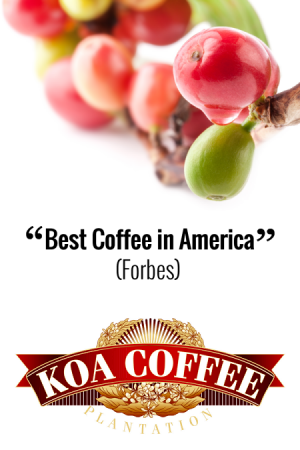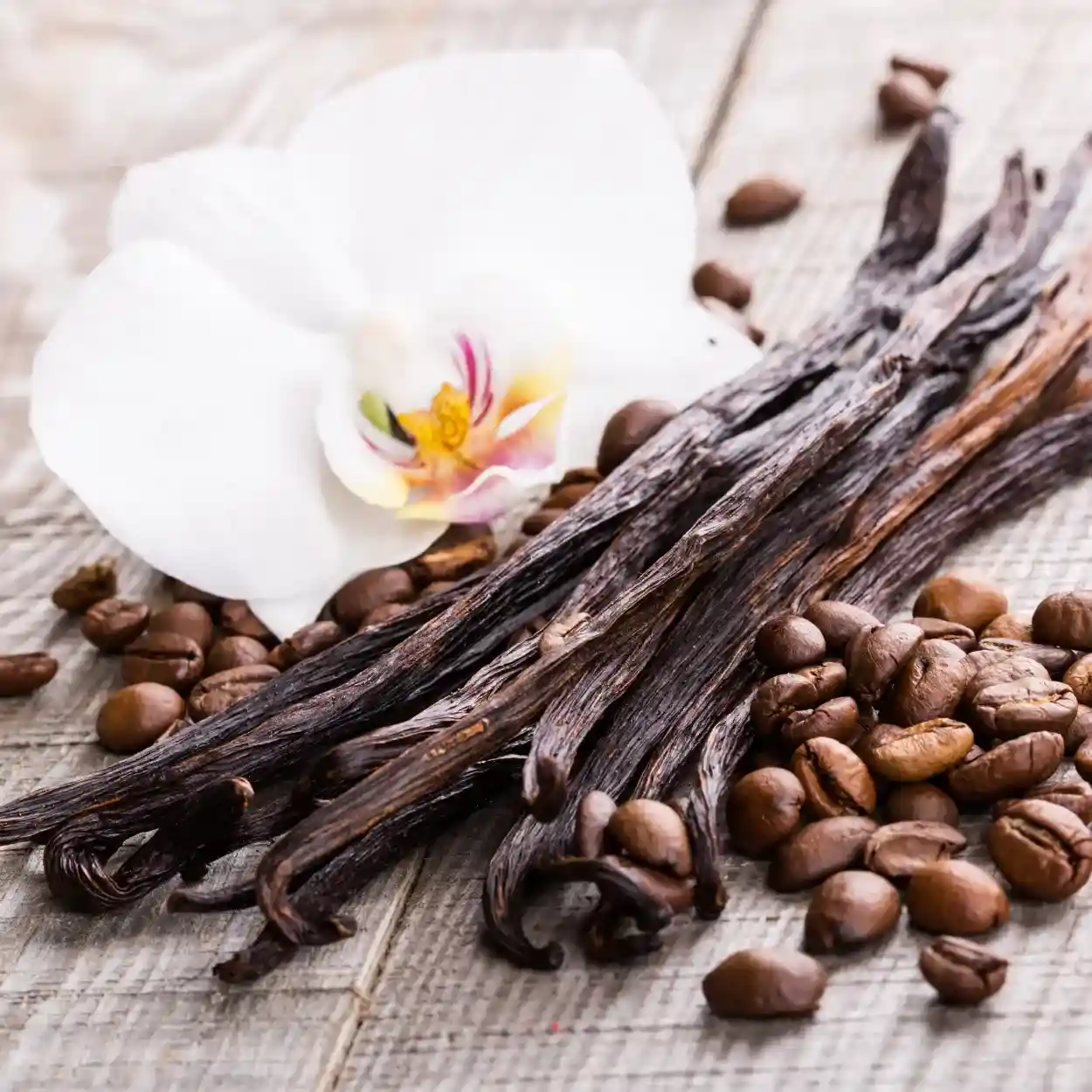As the world of coffee evolves, enthusiasts and casual drinkers alike find themselves seeking the perfect brew for those sultry summer days. Enter the age-old debate: Cold Brew vs. Iced Coffee. While iced coffee offers a quick, chilled caffeine fix, there’s something undeniably unique and enchanting about the rich and smooth taste of a well-crafted cold brew. The secret? It often begins with the right selection of beans. So, whether you’re new to this brewing method or simply looking to enhance your cold caffeine experience, this article will guide you through the Best Coffee Beans for Cold Brew in 2025 and offer insights into how to make cold brew that’s bound to rejuvenate your senses. Welcome to a cooler side of coffee exploration.
Best Cold Brew Coffee Beans: Key Takeaway
- Bean Selection is Crucial: The choice of coffee beans significantly influences the flavor profile and quality of your cold brew, making it essential to opt for beans that are best suited for cold extraction.
- The Roasting Matters: Darker roasts might be popular, but medium and light roasts can offer nuanced flavors and aromatic notes, particularly when cold-brewed.
- Preparation Techniques Impact Taste: The coffee-to-water ratio, grind consistency, and brewing time play a vital role in achieving the desired strength and taste of your cold brew.
- Pairing Possibilities are Endless: Whether you’re in the mood for a sweet dessert, a savory side, or an alcohol-infused evening treat, cold brew can be a versatile beverage that pairs wonderfully with a variety of foods and drinks.
- Storage and Ethical Sourcing: Properly storing your coffee beans preserves their freshness, while supporting fair trade and sustainable coffee practices ensuring a better future for coffee growers and the environment.
Best Coffee Beans for Cold Brew
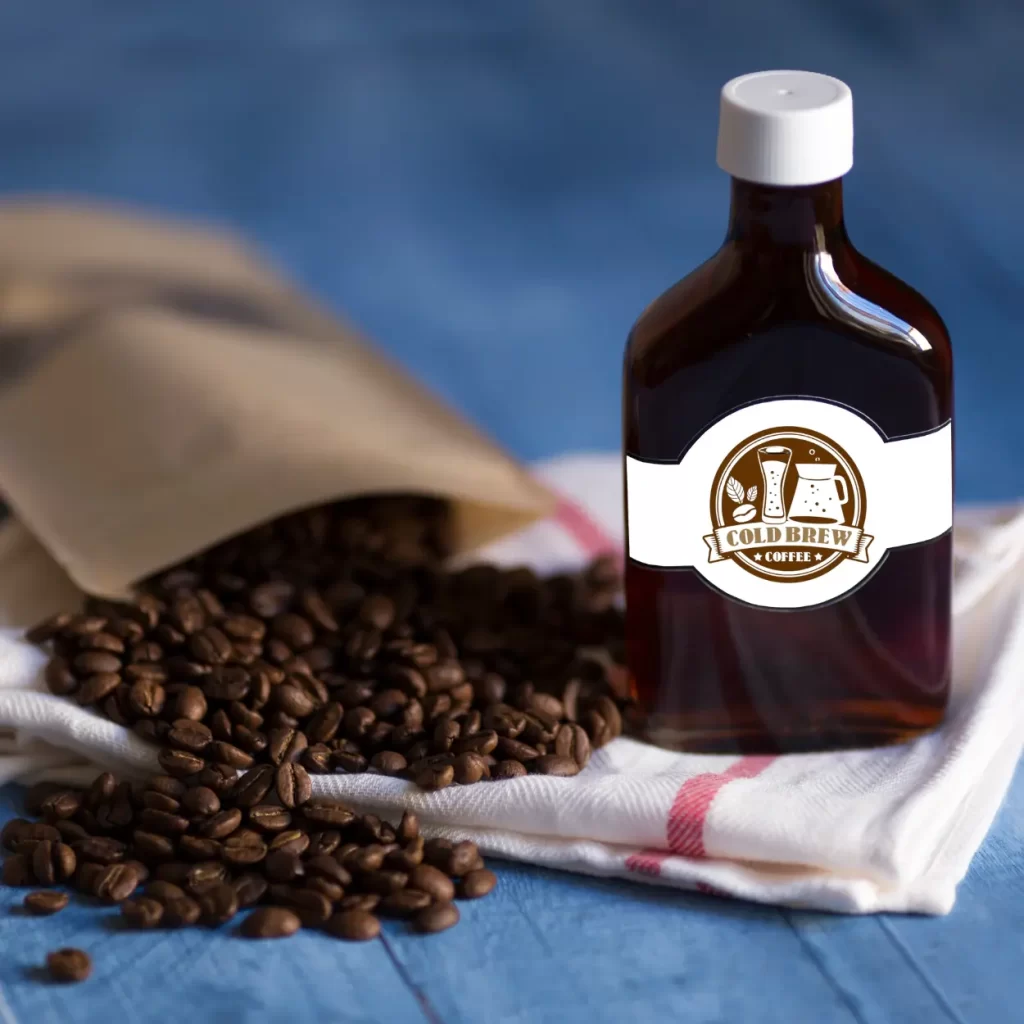
As summer temperatures soar, a refreshing and invigorating cup of cold brew coffee becomes a sought-after luxury. The best beans for cold brew coffee are not just about freshness but also about flavor profiles that excel when brewed at cooler temperatures. In 2025, the race for the best coffee bean for cold brew is hotly contested. Let’s dive into some of the frontrunners.
Ethiopian Yirgacheffe: Floral Notes and Fruity Undertones
Delving into the world of cold brew, Ethiopian Yirgacheffe stands out with its distinct floral notes and fruity undertones that seem to dance on the palate.
Volcanica Ethiopian Yirgacheffe
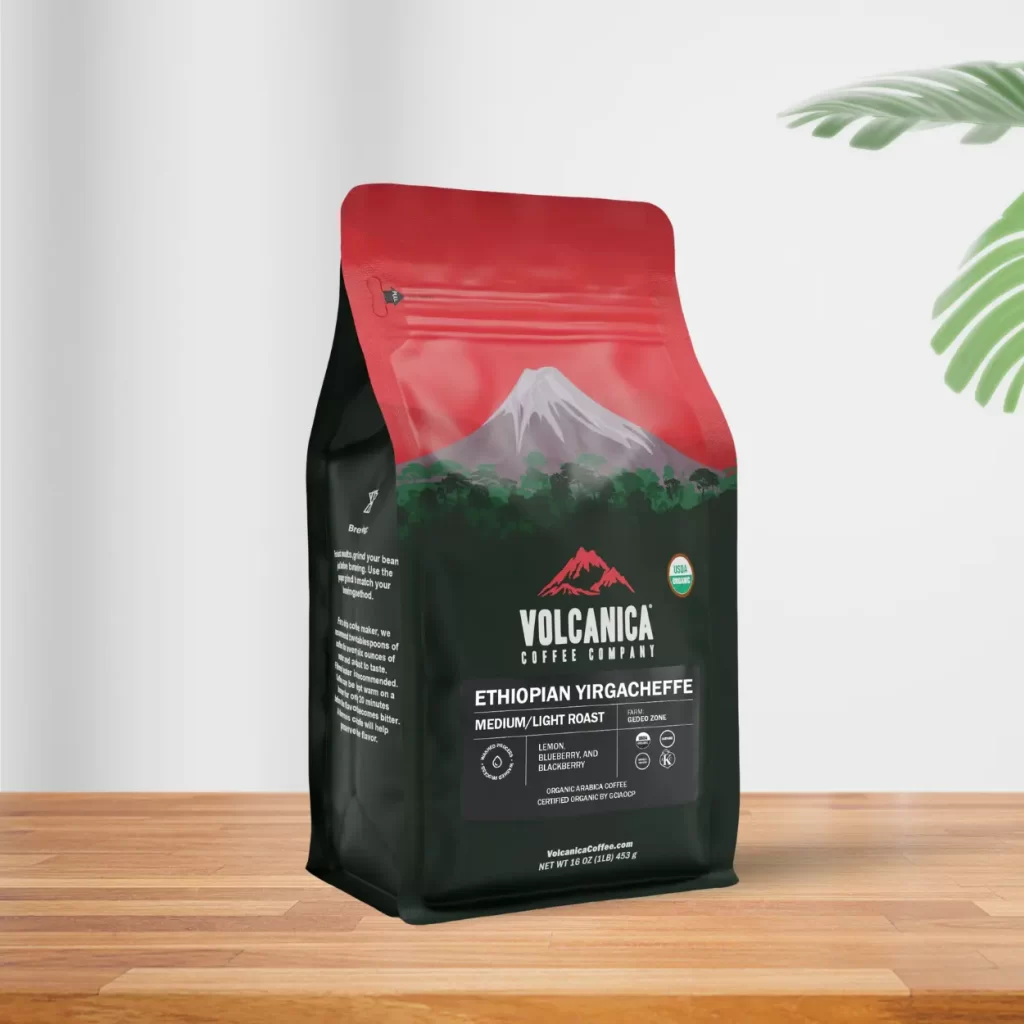
Volcanica‘s Ethiopian Yirgacheffe Coffee, originating from the southern reaches of Ethiopia, provides a moderate full-bodied coffee experience. With a touch of delightful acidity, its sharpness accentuates the raw, fruity, or even vinous undertones. It’s a testament to the traditional Arabica strains that have flourished in Yirgacheffe for generations.
Coffee Highlights:
- Certifications: USDA Organic, Fairtrade Certification, Kosher Approval
- Flavor Characteristics: Zesty Lemon, Luscious Blueberry, Rich Blackberry
- Processing Method: Washed Processing
- Roast Profile: Medium/Light Roasting
Added Insights
- Drying Process: Courtyard Drying
- Plantation: Gedeo Zone
- pH Level: 5.0
- Sourced from a Single Region
- Top-Ranked as the Number One Best Seller
Colombian Supremo: A Balanced and Rich Flavor Profile
Embracing a balanced and rich flavor profile, the Colombian Supremo lends a captivating allure to the cold brew enthusiast’s cup.
Volcanica Colombian Supremo Coffee

Cultivated amidst the Colombian Andes’ majestic peaks, Volcanica’s Colombian Supremo Coffee boasts a gentle acidity complemented by nutty undertones and a medium to full consistency. Colombia’s reputation in the coffee industry shines bright with this exceptional bean variety.
Coffee Highlights:
- Accreditations: Fairtrade Endorsed, Kosher Approved
- Taste Insights: Semi-sweet, Cocoa, Toffee, with Citrus Twists
- Method: Rinsed Technique
- Brew: Medium Depth
Further Details:
- Drying Technique: Terrace Method
- Estate: Assorted Independent Estates
- pH Level: 5.2
- Singular Source Brew: Grown at elevations of 1,650 – 1,800 meters amidst volcanic residue
- Area: Bucaramanga
- Comparable Offerings: Decaffeinated version available
Indonesian Sumatra: Earthy and Chocolatey Delight
Sumatra, an Indonesian gem, is synonymous with coffee that boasts earthy flavors intertwined with chocolatey richness.
Cooper’s Cask Coffee: Organic Sumatra Dark Roast Coffee

Cooper’s Cask Coffee offers an intriguing Sumatra blend that flawlessly combines earthy nuances with robust flavors, ensuring a well-rounded coffee experience. Every sip tells the story of sun-cured and moisture-treated beans, crafted in limited batches, embodying a sumptuous dark blend.
Coffee Highlights:
- Blend: Dark Blend
- Method: Moisture-Stripped & Roasted Stateside
- Source: Sumatra
- Flavor Highlights: Forest Floor, Rich Cocoa, Smoked Leaf, Berry
- Unique Selling Point: Cooper’s Barrel Brew’s distinct blend reflects the essence of the Lintong district in Sumatra. The moisture-based processing here, combined with sun-curing, results in a richer-bodied coffee with reduced acidity.
Nicaraguan Coffee: Central America’s Liquid Gold
Nicaraguan coffee has always stood out for its rich and vibrant flavors, tracing back to its roots amidst the pristine landscapes of Central America. Its unique soil, shaded plantations, and environmentally-conscious farming practices make it a compelling choice for coffee lovers worldwide.
Tiny Footprint Coffee – Fair Trade Organic Nicaragua

- ORGANIC COFFEE: USDA Certified Organic, Fair Trade & Shade-Grown Arabica Coffee.
Tiny Footprint Coffee, with its commitment to fair trade practices, brings forward an organic blend of Arabica beans from Nicaragua. Embodying a rich and intense dark roast, it beautifully captures the essence of Nicaraguan flavors. Vibrant hints of apricot, fig, and spice, all nestled within a chocolatey aroma, create an exceptional flavor profile. Moreover, their innovative carbon-negative approach makes every sip contribute to ecological balance, endorsing their commitment not just to coffee lovers, but to the environment as well.
Coffee Highlights:
- Certification: USDA Organic, Fair Trade
- Flavor Profile: Chocolate undertones, Apricot, Fig, Spice
- Origin: Sourced from PRODECOOP, Nicaragua
- Roasting Technique: Artisanal small-batch using a vintage 90-kilo German-built Probat drum roaster
- Sustainability: Carbon-negative approach with contributions to reforestation in Ecuador’s Mindo Cloud Forest
Guatemalan Coffee: Elevated Flavors from Volcanic Terrains
Emerging from the vibrant landscapes of Central America, Guatemalan coffee is celebrated for its intricate flavors and delightful aroma, making it a favorite among aficionados seeking a taste that transports them to its lush plantations.
Copper Moon Guatemalan Antigua Blend

- PREMIUM LIGHT ROAST COFFEE: Coffees cultivated in the high-altitude, rugged mountains of Guatemala are celebrated worldwide for their exceptional quality and distinctive traits. Our Guatemalan coffee boasts a rich, full-bodied profile complemented by a crisp, well-balanced acidity, delivering a truly remarkable and nuanced coffee experience.
Copper Moon’s Guatemalan Antigua Blend is a testament to the wonders of high-altitude coffee cultivation. Grown in fertile volcanic soils, this blend offers an enticing aroma and a remarkable flavor profile, where subtle cocoa nuances meet a trace of smokiness. It’s not just about the taste; the Copper Moon ethos resonates with their commitment to sustainable coffee sourcing and the art of roasting. Every bean speaks of their dedication to providing a premium coffee experience, combining artisanal finesse with sustainability, and crafting a brew that’s truly out of this world.
Coffee Highlights:
- Quality: Premium Coffee Blend, Gluten Free, Non-GMO, Allergen-Free, Kosher
- Flavor Notes: Cocoa with a hint of smokiness
- Sourcing: Globally sustainable coffee bean program
- Roasting: Small batches, ideal for home grinding
- Mission: Family-owned, committed to crafting exquisitely smooth, premium coffee
- Origin: Sourced from 5 continents and 17 diverse countries, highlighting the art of handcrafted coffee.
Understanding Cold Brew Coffee: A Brief Overview
Cold brew coffee, in its essence, is more than just another way to prepare a cup of Joe. It’s a unique process that transforms the intricate flavors of coffee beans into a smoother, mellower, and less acidic beverage. To fully appreciate the art and allure of cold brew, it’s crucial to understand its uniqueness, how it stands apart from other coffee preparations, and the reasons behind its soaring popularity.
What Makes Cold Brew Unique?

The making of cold brew is distinct from traditional methods in several ways: (1)
- Temperature: Unlike its counterparts, cold brew coffee is brewed using cold or room temperature water over an extended period.
- Brewing Time: The process typically lasts anywhere from 12 to 24 hours. This extended brewing time allows for a gentler extraction of coffee flavors.
- Flavor Profile: The result is a beverage that is less acidic and bitter than hot-brewed coffee, delivering a smoother, sweeter, and full-bodied taste.
- Concentration: Cold brew is often more concentrated than regular coffee, and it’s versatile – it can be diluted with water, milk, or any milk alternative to suit one’s preference.
Cold Brew vs. Iced Coffee: Unveiling the Distinctions

The debate of Cold Brew vs. Iced Coffee often emerges in coffee conversations. While both are served cold, their preparation and resulting flavors are distinctly different:
- Brewing Method: Iced coffee is essentially regular coffee that’s brewed hot and then cooled down by pouring over ice. In contrast, cold brew is made without the application of heat.
- Taste and Acidity: Iced coffee tends to retain the acidity and bitterness of its hot counterpart. Cold brew, due to its unique brewing process, often results in a milder and smoother flavor.
- Shelf Life: Cold brew can be stored and enjoyed for up to two weeks in the refrigerator without a significant loss in flavor, whereas iced coffee is best consumed shortly after preparation to enjoy its optimal taste.
- Caffeine Content: Depending on the concentration and the best coffee bean for cold brew, cold brew can sometimes have a higher caffeine content than iced coffee.
Exploring the Rise in Cold Brew’s Popularity

Cold brew coffee has seen a notable surge in its fan base over recent years, and there are several factors attributing to its rise:
- Smooth Taste: For those who prefer a less acidic coffee, cold brew provides a gentler option without compromising on flavor depth.
- Versatility: Its concentrated nature allows it to be a base for various coffee beverages, from creamy lattes to refreshing coffee cocktails.
- Health Benefits: Reduced acidity means it’s often easier on the stomach and teeth. (2)
- Summer Essential: The demand for chilled beverages during warmer months has driven many coffee enthusiasts to embrace cold brew as their go-to drink.
As the world of coffee continues to evolve, cold brew stands out as a testament to how tradition and innovation can coalesce, offering coffee aficionados a delightful and distinct experience.
Factors Influencing Cold Brew Bean Selection
Venturing into the world of cold brew means diving deep into the realm of coffee bean selection. While personal preferences play an undeniable role, understanding the various factors that contribute to the perfect cup can greatly enhance one’s cold brew experience. The quest to discover the best beans for cold brew coffee is shaped by multiple elements, from the roast profile and bean origin to the intricacies of grinding.
Roast Profile: Finding the Sweet Spot

When it comes to cold brew, the roast profile can significantly dictate the final flavor profile of the brew:
- Light Roasts: Known for their sharp acidity and vibrant flavor notes, light roasts can often bring out fruity or floral undertones in a cold brew.
- Medium Roasts: These are versatile and balanced, capturing a harmony of acidity, body, and flavor. They tend to produce cold brews that are rich yet not overwhelmingly intense.
- Dark Roasts: For those who cherish bold flavors with deeper notes like chocolate or nuts, dark roasts can be the ideal choice. However, it’s worth noting that some of the subtle notes might be overshadowed by the dominant roasted flavors.
- Recommendation: For newcomers, starting with a medium roast can be a great way to familiarize oneself with cold brew nuances before venturing into lighter or darker terrains.
Bean Origin: From Single-Origin to Blends

The geographical origin of the coffee bean plays a pivotal role in its taste and aroma:
- Single-Origin Beans: These beans are sourced from one location, be it a specific country, region, or even a single farm. They often offer unique and distinctive flavor profiles that reflect their place of origin. Examples include Ethiopian Yirgacheffe, which can have floral and fruity notes, or Sumatran beans, known for their earthy richness.
- Blends: A concoction of beans from multiple origins, blends are crafted to produce a balanced flavor profile. They might combine the boldness of one origin with the subtlety of another.
- Experimentation is Key: Exploring both single-origin beans and blends allows coffee enthusiasts to identify the flavors they most enjoy in their cold brew.
Decoding the Grind: Coarse or Extra Coarse?

The grind size of the coffee beans profoundly affects the extraction process and the resulting taste of the cold brew:
- Coarse Grind: Resembling breadcrumbs, a coarse grind offers slower extraction, which suits the prolonged brewing time of cold brew, resulting in a smoother beverage.
- Extra Coarse Grind: This grind size is similar to peppercorns. While it might result in a lighter-bodied brew, it ensures that the coffee doesn’t over-extract and become bitter.
- Avoiding Fine Grinds: Fine grinds can lead to over-extraction in cold brew, making the beverage excessively bitter and murky.
- Recommendation: Starting with a standard coarse grind can be beneficial. From there, one can adjust based on personal taste preferences, leaning towards extra coarse if a lighter body is desired.
Choosing the right beans and grind for cold brew is akin to an art form, one that offers endless possibilities for experimentation and discovery. By understanding the fundamental factors, every coffee lover can embark on a journey to perfect their cold brew concoction.
What You Need to Make Cold Brew at Home

Cold brew has established itself as more than just a fleeting trend—it’s a staple for coffee lovers around the world. Its smoothness, lower acidity, and robust flavor make it particularly appealing. As more people seek to replicate their favorite coffee shop’s cold brew at home, it’s crucial to understand the fundamental elements involved. Whether you’re considering learning how to make cold brew coffee in a French press or another method, having the right equipment and ingredients is essential. Here, we’ll discuss what you need to embark on your cold brew journey.
Essential Equipment
When diving into cold brewing at home, the right equipment can make all the difference:
- French Press: This popular tool can be versatile. While often used for hot coffee, it’s also fantastic for cold brew due to its built-in filter.
- Large Jar or Pitcher: For those who don’t have a French press, a simple jar or pitcher can suffice, especially when paired with a separate strainer.
- Coffee Grinder: Freshly grinding the best cold brew coffee beans will significantly enhance the flavor. A burr grinder is ideal, allowing for a consistent coarse grind.
- Strainer or Coffee Filter: If you’re not using a French press, having a fine-mesh strainer or dedicated coffee filter ensures you separate the grounds from the liquid seamlessly.
- Measuring Tools: Consistency is key. Using a scale and measuring cup helps maintain the correct coffee-to-water ratio.
Quality Ingredients
The ingredients you select will shape the taste and quality of your cold brew:
- Coffee Beans: Start with the best. Selecting the best coffee beans for cold brew is pivotal—beans that are freshly roasted and high in quality can significantly elevate your brew.
- Water: Cold, filtered water can enhance the purity of the flavor. Tap water with impurities or strong mineral flavors can overshadow the coffee’s natural notes.
- Optional Add-Ins: Once the cold brew is ready, consider additives like milk, syrups, or spices. These can add an extra dimension of flavor, but always taste the brew on its own first!
Time and Patience
One of the distinct aspects of cold brew is the prolonged brewing time:
- 12 to 24 Hours: Most cold brew recipes recommend steeping the coffee grounds in water for an extended period, usually overnight or up to 24 hours.
- Temperature: Cold brew doesn’t require heat. The process involves brewing at room temperature or in the refrigerator.
- Taste Test: Depending on the coffee beans and their grind size, the optimal brewing time might vary. It’s a good practice to taste the brew at the 12-hour mark and adjust accordingly.
Brewing Cold Brew in a Nutshell
- Select Beans: Choose the best cold brew coffee beans, preferably medium to dark roast for a smooth flavor.
- Grind: Coarsely grind your beans, akin to breadcrumbs in texture.
- Mix: In a French press, combine coffee and cold water at a 1:5 ratio.
- Let It Steep: Cover without pressing down the plunger. Allow 12-18 hours at room temperature or 16-24 hours in the fridge.
- Press & Pour: After steeping, press down the plunger to separate the grounds and liquid. Pour and dilute if needed.
- Serve: Over ice, maybe with a splash of milk or a choice of sweetener, and savor your homemade cold brew!
Overall, making cold brew at home is a rewarding endeavor. While it requires patience, the end result—a glass of smooth, flavorful coffee—is well worth the wait. With the right equipment, quality ingredients, and a bit of time, you’ll soon master the art of cold brew.
Sourcing and Storing Coffee Beans

Navigating the world of coffee involves more than just selecting a brew method or flavor profile. It’s about understanding the journey of the beans, from ethically-sourced terrains to the art of preserving their pristine flavors at home. Dive into the essentials of acquiring and safeguarding your precious beans for the most aromatic and rewarding coffee experience.
The Journey from Farm to Cup: Ethical Considerations
When it comes to the coffee industry, ethical sourcing is of paramount importance. With the worldwide consumption of coffee continually on the rise, ensuring that growers receive a fair wage for their labor is critical. Enter the concept of fair trade. This model not only guarantees a decent payment for farmers but also promotes sustainable coffee practices. Through these practices, both the environment and the communities where coffee is grown benefit. Ethical considerations don’t stop at fair compensation; they also encompass a commitment to environmental preservation, ensuring no deforestation occurs due to coffee cultivation, and promoting organic farming methods.
Key Takeaways:
- Fairtrade ensures a fair wage for coffee growers and contributes to the stability of their communities.
- Sustainable coffee practices focus on protecting the environment and promoting organic, eco-friendly farming techniques.
Storing for Freshness: Airtight Containers and Cool Temperatures

So you’ve got your ethically sourced beans. Now, how do you maintain their freshness? Knowing how to store coffee beans properly is vital for preserving their flavor and aroma. First and foremost, airtight containers are your best friend. Oxygen, light, and moisture are the enemies of fresh coffee, so an opaque, sealed container is ideal. Store this container in a cool, dark place, away from direct sunlight and any strong odors. While some might be tempted to store their beans in the fridge or freezer, doing so can introduce moisture, which is detrimental to the beans’ quality. It’s best to purchase beans in small amounts, ensuring you use them while they’re at their peak.
Key Takeaways:
- Use airtight, opaque containers to block out light, oxygen, and moisture.
- Store in a cool, dark place. Avoid the fridge or freezer to keep moisture at bay.
Reviving Old Beans: Can It Be Done?
Coffee beans, like many natural products, have a finite shelf life. While storing them correctly can extend their freshness, there’s no magic trick to bring stale beans back to their original glory entirely. However, if you find an old bag of beans, all is not lost. While they may not produce your most exceptional cup of coffee, they can still be used for cold brews, where the nuances in flavor are less noticeable than in hot brew methods. It’s always worth tasting them before deciding to throw them out.
Key Takeaways:
- Old beans can’t be entirely revived, but they might still be usable for certain brew methods like cold brew.
- Always sample older beans to gauge their flavor before discarding them.
The Art of Grinding: DIY or Pre-Ground?
Coffee grinding is much more than a preparatory step; it’s a transformative process that affects the flavor, aroma, and overall quality of your brew. Here’s a closer look at the debate between grinding your beans at home (DIY) versus opting for pre-ground coffee:
- Flavor and Freshness: Freshly ground coffee beans release their oils and flavors more effectively, leading to a fresher and more robust taste in the cup. Grinding your beans just before brewing ensures that you capture the full range of flavors that the bean has to offer. In contrast, pre-ground coffee, especially if not stored properly, can lose its freshness faster.
- Consistency: One advantage of pre-ground coffee is the consistency of the grind. Manufacturers use advanced machines to achieve a uniform grind, whether it’s fine, medium, or coarse. For DIY grinders, especially those new to the process, achieving the perfect grind consistency can take some practice.
- Convenience: Pre-ground coffee wins in terms of ease and speed. It’s ready to brew, making it perfect for those hectic mornings. Grinding at home, while offering fresher flavors, requires a bit more time and effort.
- Customization: A significant benefit of DIY grinding is the ability to tailor the grind size to your brewing method. Different brewing techniques, such as espresso or French press, require different grind sizes. Having a grinder at home allows you to customize the grind based on your preference or the coffee method you’re using.
- Cost: Investing in a good coffee grinder can be a bit pricey initially. However, in the long run, buying whole beans and grinding them at home can be more cost-effective than consistently buying pre-ground coffee.
Whether you choose to grind at home or opt for the convenience of pre-ground, the best choice is the one that fits your lifestyle, budget, and coffee preferences.
Expert Tips for Perfecting Your Cold Brew
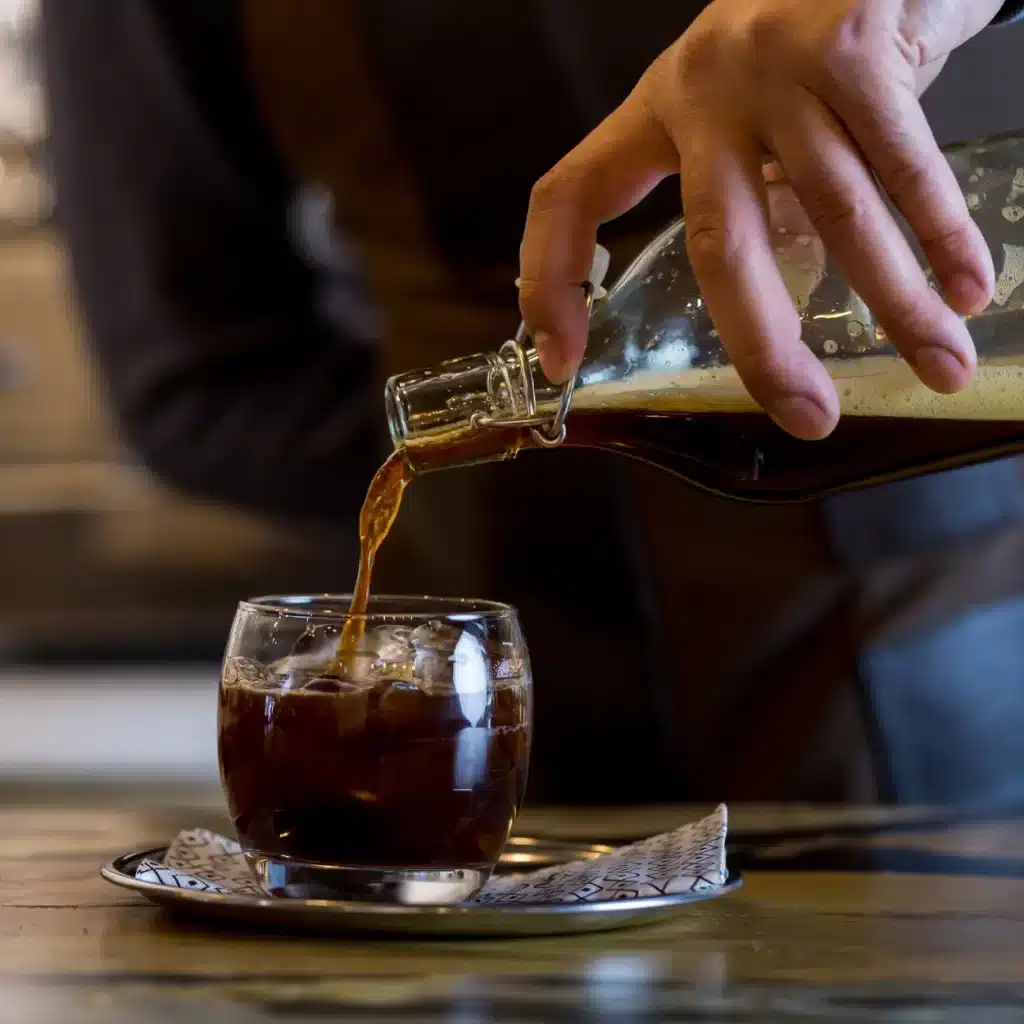
Embarking on the cold brew journey can be thrilling, but it’s not just about merging coffee and cold water. Precision, patience, and a dash of personalization can elevate your cold brew from good to sublime. Here’s a compilation of expert tips that will guide you in crafting the perfect cup:
Ratios Rule: Coffee-to-Water Precision
Achieving a harmonious balance in your cold brew begins with understanding the coffee-to-water ratio. It’s crucial to get this right, as it determines the strength and flavor of your brew.
- Golden Ratio: As a general guideline, a commonly recommended ratio is 1:4, meaning for every one part of coffee, you add four parts of water. However, this can be adjusted based on personal preferences.
- Adjust to Taste: If you prefer a stronger, more concentrated brew, you might gravitate towards a 1:3 ratio. Conversely, for a lighter taste, 1:5 might be more up your alley.
- Consistent Measurements: As previously discussed, ensure you use the same measurement tool (like a scale or measuring cup) for both the coffee and water to maintain consistency in every brew.
Patience is a Virtue: Brewing Time and Cold Extraction
Cold brew coffee isn’t about haste; it’s about allowing flavors to slowly and methodically extract:
- Minimum Time: As mentioned, typically, a cold brew should steep for at least 12 hours, but it’s not uncommon to let it brew for up to 24 hours.
- Temperature Matters: Ensure your brew is kept at a consistently cold temperature throughout the brewing process, usually in a refrigerator. This slow, cold extraction is what gives cold brew its unique smoothness and low acidity.
- Avoid Over-Extraction: Beyond 24 hours, your coffee may start to over-extract, which could result in bitter flavors. It’s essential to strike a balance.
Personalizing Your Brew: Adding Flavors and Creaminess
While the pure, unadulterated taste of cold brew is a delight in itself, there’s no harm in experimenting:
- Natural Sweeteners: To add a hint of sweetness without resorting to refined sugars, consider natural alternatives like agave syrup, honey, or maple syrup.
- Creaminess: For those who fancy a creamier texture, milk, almond milk, oat milk, or even coconut milk can be great additions.
- Flavor Infusions: Spices like cinnamon or vanilla can be steeped along with the coffee for an added layer of complexity. For a twist, consider orange or lemon zest.
Remember, while these expert tips set a framework, the perfect cold brew is the one that’s tailored to your palate. Experiment and savor the journey!
Cold Brew Pairings: Enhancing Your Coffee Experience
Cold brew, with its mellow flavors and velvety texture, offers a unique taste profile that can beautifully complement a myriad of dishes. From saccharine delights to savory bites and even spirited beverages, there’s a cold brew pairing for every palate. Dive into these flavorful combinations that can elevate your coffee experience.
Sweet Treats: Best Desserts with Cold Brew

Cold brew’s smooth and slightly sweet profile makes it an ideal companion for a variety of desserts:
- Chocolate-Based Desserts: Whether it’s a rich chocolate cake, brownies, or mousse, the dark cocoa notes beautifully mirror the cold brew’s depth.
- Cream Pastries: Think eclairs or cream puffs. The lightness of the cream juxtaposes perfectly with the cold brew’s robust flavor.
- Ice Cream & Gelato: A scoop of vanilla or caramel ice cream can either be dunked into the cold brew or enjoyed alongside for a refreshing experience.
- Fruit Tarts: The acidity of fruits like berries or citrus in tarts provides a delightful contrast to the coffee’s smoothness.
Savory Sides: Unexpected yet Delightful Combinations

Moving away from the conventional, cold brew surprisingly pairs well with several savory dishes:
- Cheese Boards: Hard cheeses like cheddar or gouda can resonate with the subtle nutty undertones of the cold brew.
- Grilled Sandwiches: Think ham, cheese, or even veggie sandwiches with a toasted crust, creating a warm, crunchy contrast to the cool brew.
- Breakfast Items: Avocado toasts, quiches, or even bacon can be great sides. The saltiness can enhance the coffee’s natural sweetness.
- Spiced Nuts: A bowl of roasted or spiced nuts offers a crunchy texture and a flavor profile that complements cold brew’s essence.
Alcohol Infusions: Elevate Your Evening with Cold Brew Cocktails

Who says cold brew is only for mornings? As evening beckons, infuse your brew with spirits for a refined twist:
- Cold Brew Martini: Mix cold brew, vodka, and a hint of coffee liqueur. Shake well and serve with a coffee bean garnish.
- Whiskey Coffee: Blend the deep flavors of whiskey with cold brew, and maybe a touch of cream, for a smooth cocktail.
- Rum & Brew: Dark rum, with its sweet molasses notes, can be beautifully layered with cold brew. Add a hint of brown sugar or simple syrup for added sweetness.
- Coffee Beer Float: For beer enthusiasts, try adding a scoop of coffee ice cream to your stout or porter, then top up with a cold brew for an effervescent twist.
Experiment with these pairings, and let each sip of cold brew take you on a gastronomic journey of discovery.
Conclusion
As we come to the end of our exploration into the world of cold brew coffee, one thing remains clear: the choice of the coffee bean plays a pivotal role in the final taste and experience. “Best Coffee Beans for Cold Brew: Exploring 2025‘s Finest Selections” has taken you on a deep dive into the nuances of bean selection, preparation methods, and pairing possibilities, underlining the significance of each decision in crafting the perfect cold brew. With 2025 ushering in a fresh assortment of options, the best cold-brew coffee beans await your discovery. As you journey forward, let your palate be the guide and relish every chilled sip of this timeless brew.
FAQ
Can I use any coffee beans for cold brew?
Yes, but beans specifically roasted for cold brew may offer a smoother flavor profile.
How long does cold brew coffee need to steep?
Cold brew coffee should steep for about 12-24 hours, depending on desired strength.
Are single-origin beans better for cold brew?
Single-origin beans can provide a unique and distinct flavor, but the best bean depends on personal preference.
Can I use a finer grind for a stronger cold brew?
A finer grind can result in a stronger brew, but it might also lead to over-extraction and bitterness. Stick to coarse grinds for optimal results.




